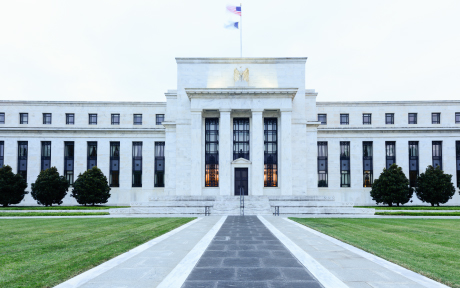The New York Fed DSGE Model Forecast—May 2017
This post presents our quarterly update of the economic forecasts generated by the Federal Reserve Bank of New York’s dynamic stochastic general equilibrium (DSGE) model. We describe very briefly our forecast and its change since February 2017. As usual, we wish to remind our readers that the DSGE model forecast is not an official New York Fed forecast, but only an input to the Research staff’s overall forecasting process. For more information about the model and variables discussed here, see our DSGE Model Q & A .
Dealer Balance Sheets and Corporate Bond Liquidity Provision
Measuring Trend Inflation with the Underlying Inflation Gauge
Hey, Economist! Is Now a Good Time to Be Graduating from College?

A Conversation with Jaison R. Abel and Richard Deitz With the 2017 college graduation season in full swing, we thought it would be helpful to take stock of the job prospects for recent college graduates. Is now a good time to be graduating from college? Publications editor Trevor Delaney caught up with Jaison Abel and […]
Household Borrowing in Historical Perspective
Do Credit Markets Watch the Waving Flag of Bankruptcy?
Paul Goldsmith-Pinkham explores how the lifting of bankruptcy flags affects borrowers’ credit scores and credit outcomes.
At the N.Y. Fed: The Evolution of OTC Derivatives Markets
Just Released: 2017 SCE Housing Survey Finds Increased Optimism about Home Price Growth
Which Dealers Borrowed from the Fed’s Lender‑of‑Last‑Resort Facilities?
Forecasting with Julia
A little more than a year ago, in this post, we announced DSGE.jl—a package for working with dynamic stochastic general equilibrium (DSGE) models using Julia, the open-source computing language. At that time, DSGE.jl contained only the code required to specify, solve, and estimate such models using Bayesian methods. Now, we have extended the package to provide the additional code needed to produce economic forecasts, counterfactual simulations, and inference on unobservable variables, such as the natural rate of interest or the output gap. The old, pre-Julia version of the code, which was written in MATLAB and is posted here on Github, a public repository hosting service, also performed some of these functions, but not quite as fast.
















 RSS Feed
RSS Feed Follow Liberty Street Economics
Follow Liberty Street Economics